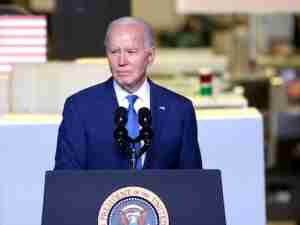PBOC Suspends Some Foreign Banks’ Cross-Border Yuan Business
By: Bloomberg News | Dec 30 2015 at 05:11 AM | International Trade
China has suspended at least two foreign banks from conducting some cross-border yuan business until late March, limiting their scope to profit from a widening gap between the currency’s exchange rates at home and abroad, according to people with direct knowledge of the matter.
A three-month ban on settling offshore clients’ yuan transactions in the onshore market was imposed Tuesday by the People’s Bank of China, they said, asking not to be identified because they aren’t authorized to speak publicly on the matter. The clampdown comes as the growing offshore-onshore spread makes it profitable to buy the currency in Hong Kong and sell it in Shanghai. The PBOC didn’t immediately respond to questions regarding the matter, which was reported earlier by Reuters.
The currency’s discount in Hong Kong’s freely traded market to its Shanghai rate reached a three-month high of 1.8 percent on Wednesday, before narrowing to 1.3 percent in late trading amid suspected intervention in the offshore market. The difference swelled to more than 2 percent following an Aug. 11 devaluation that spurred an exodus of funds from the world’s second-largest economy and yuan purchases to support the exchange rate contributed to a drop of more than $400 billion in China’s foreign-exchange reserves over the last 11 months.
“Earlier, some banks were supposed to be penalized for engaging in arbitrage between the offshore and onshore markets,” said Suan Teck Kin, an economist at United Overseas Bank Ltd. in Singapore. “If the PBOC sees it’s a genuine trade, they’ll probably let you proceed. If they suspect you are manipulating, they want to clamp down. What they want to see is a natural convergence of the two yuan rates.”
The PBOC said last week that it would allow more foreign institutions with significant volumes to trade in the onshore foreign-exchange market, which it said will help narrow the difference. The PBOC is unlikely to allow the gap to stay persistently above 1,000 so-called pips because it hurts sentiment, said Zhou Hao, an economist at Commerzbank AG in Singapore. The offshore yuan was last trading at 6.5760 a dollar in Hong Kong and the rate in Shanghai was 6.4902, leaving a spread of 858 pips. The difference exceeded 1,200 pips on Wednesday before the offshore yuan erased a 0.5 percent loss in late trading.
The State Administration of Foreign Exchange said Wednesday it will prevent risks associated with abnormal cross-border capital flows. The PBOC has ordered the suspension of liquidation of spot positions for clients, some services related to the cross-border as well as the onshore and offshore businesses, according to Reuters.
The clampdown is a short-term market adjustment because the two prices will eventually converge and the authorities have already set a target of bringing this about by 2020, said UOB’s Suan.
“The PBOC’s move means that the lenders will no longer be able to do arbitrage trades in the onshore and offshore yuan,” said Ken Cheung, a Hong Kong-based strategist at Mizuho Bank Ltd. “This may lead to a widening spread because cross-border flows help narrow the gap. I don’t see any immediate negative impact on the yuan’s internationalization.”

